Lois Ehrmann – 2-Day Certification Course: Trauma and Attachment Treatment for Children and Adolescents
Lois Ehrmann – 2-Day Certification Course: Trauma and Attachment Treatment for Children and Adolescents course is now available at an affordable price. You can check out directly using multiple payment gateway options. If you have any questions or need an alternative payment method, feel free to contact us.
Lois Ehrmann – 2-Day Certification Course: Trauma and Attachment Treatment for Children and Adolescents
Becoming a Certified Child and Adolescent Trauma Professional will demonstrate your passion for and knowledge of treating traumatized children and adolescents.
This 2-Day Certification Course in Trauma and Attachment Treatment for Children and Adolescents will provide you with the essential skills, proven interventions, and state-of-the-art treatments you need to successfully treat your most challenging clients—children, adolescents and families suffering from trauma and attachment wounds.
Children’s neurology is impacted at the deepest levels of development resulting in emotional, behavioral and psychological problems. When the foundational blocks of attachment are fractured, you face therapeutic roadblocks—innate distrust of others, acting out, avoidance/shutting down, extreme reactivity, self-harm, affect dysregulation, substance abuse, poor boundaries—making successful treatment seem impossible to achieve.
Purchase this intensive 2-day certification training and learn the most effective tools and techniques to help children and families more fully engage in treatment, identify and express their emotions, manage disturbing thoughts and feelings, and achieve and maintain recovery.
Elevate your practice and improve your ability to:
Skillfully integrate proven interventions rooted in EMDR, IFS, Somatic Psychotherapy
Unpack children’s history and create a cohesive trauma narrative
Use children’s trauma narrative to process attachment disruptions and trauma responses
Map children’s problematic behavior and the parent’s responses to the behavior
Help children identify trauma triggers and develop appropriate, healthy regulation skills
Help children overcome fears about connecting in relationships
Repair self-destructive patterns, negative limiting beliefs and affect dysregulation
Empower families to improve boundaries, discipline and communication
Teach families/caregivers concrete, practical ways to repair attachment wounds
Best of all, you can become a Certified Child and Adolescent Trauma Professional (CATP) upon completion of this course—at no additional cost to you—adding valuable skills and credentials to your resume.
Purchase today and show your clients and their families with trauma and attachment wounds, that you’ve taken the time and effort to effectively help them heal!
Articulate the neurological impact of trauma on attachment in children and adolescents and how current research informs treatment planning.
Differentiate between the clinical presentation of children and adolescents who exhibit insecure vs. secure vs. disorganized attachment.
Implement trauma and attachment assessments to develop observable and measurable treatment plan goals.
Implement the “internal working model” intervention to clarify the client’s attachment category to inform treatment planning.
Operationalize the core treatment goals into measurable objectives in the treatment of trauma and attachment.
Implement the Integrated Attachment and Trauma Timeline Strategy (IATTS) to organize and construct the client’s trauma narrative.
Utilize the client’s trauma narrative to process attachment disruptions and trauma responses.
Apply bilateral tapping to reduce the intensity of strong affect and/or to amplify a strength resource.
Integrate elements of Internal Family Systems psychotherapy to map out a child’s problematic behavior and the parent’s responses to the behavior.
Utilize bibliotherapy to teach children, adolescents and families the concepts of Internal Family Systems psychotherapy to improve treatment outcomes.
Integrate resource tapping (EMDR) into Attachment Focused Family Therapy to increase the strength of attachment and healthy regulation in children, adolescents and families.
Compose mindfulness-based breath work, guided imagery and sensory awareness to improve affect regulation.
Attachment Theory and Attachment Therapy
Recent influences in attachment theory and therapy
Attachment importance in the development of the healthy individual
Attachment styles vs. disorganized attachment
Neuroscience supporting bottom-up therapeutic strategies
DSM-5®: Classification of trauma and stressor-related disorders
Neurological Impact of Trauma and Attachment
How the research informs treatment
Trauma is stored/stuck in the right hemisphere
Chronic activation of the fight/flight/freeze response (Amygdala issues)
The reason for the stuckness
Cortisol and its impact on cognitive impairment
Indicators of Trauma and Attachment Disruption
Common diagnostic mistakes
Characteristics of the children and adults
View attachment as a continuum
Assessments for Trauma and Attachment Wounds: Case Studies and Video Sessions
Protocol to assess the strength and health of the parental/caregiver system
Most effective scales, measures and instruments
Methods to explain the internal working model of the child to the parent/caregiver
Diagnostic considerations/Differential diagnosis
Complex Trauma, Complex PTSD, Developmental Trauma, Disorganized Attachment, Reactive Attachment Disorder
Translate Trauma and Attachment Goals into SMART Objectives
Core treatment goals
Relational factors between client/therapist and child/parent/caregiver
Dismantling the individual’s unhealthy negative internal working model
Increase the level of affective mastery
Reduce distancing defenses
Increase attachment within healthy relationships and for adults with their own children
Containment of rage, anger and pain so that resolution can occur
How to operationalize goals into measurable objectives
The Integrated Attachment and Trauma Timeline Strategy (IATTS): Help Children and Families Unpack Their History
A guide to move from assessment to treatment
Techniques to clarify and construct the client’s cohesive narrative
Methods to “chunk” overwhelming and disorganized historical material
Integrates with evidence-based treatment modalities
Eye Movement Desensitization Reprocessing (EMDR)
Internal Family Systems (IFS)
Attachment-Focused Family Therapy
Bibliotherapy
Expressive Therapies and Somatic Psychotherapy
TECHNIQUES WITH CASE STUDIES: PUTTING IT ALL TOGETHER WITH PRACTICE TIME!
A Child Who Had No Safety
A view of Attachment-Focused Family Therapy
Healthy vs. disrupted attachment/bonding cycle
Intersubjectivity and Attunement: What being in sync does/does not look like
PACE: Playfulness, Acceptance, Curiosity and Empathy
Co-regulation of affect and co-creation of experiences
When Traumatized Children are Broken into Many Parts
Secure vs. anxious and avoidant attachment styles
Disorganized attachment: Recognize the signs
How attachment impacts parent-child dyads
Integrate IFS into Attachment-Focused Family Therapy
Parts work through sand tray, art strategies and puppetry
Full of Rage with No Where to Go
Integrate EMDR into Attachment-Focused Family Therapy
Teach parents and children resource tapping and positive self-talk
Use tapping as part of imaginal nurturing
Calming and self-regulating strategies from EFT
Naming feelings with bilateral drumming
Parts that Children Wall Off
Terrified of being terrified
The freeze of the fight-flight-freeze trauma response
Help children understand their own thoughts, feelings, behaviors and experiences
The Rage that Comes from Physical Abuse
When children reenact the trauma of abuse
See the positive intention in all parts
Teach compassion, curiosity, calmness and connectedness through expressive therapies
When Parents and Children Both Have Activated Parts
Activation Parts Map: Z-Process
Naming and witnessing the activated parts
Helping the parts understand each other
Protecting Sibling and Self in Foster Care
Protector parts activity/worksheet
Teach children to use their inner imagination to work with their part
Transform terror into trust
Repair the Fracture with Adoptive Parents
Clarify the trauma and negative internal working model
Parts mapping: Teach parts concepts to children and parents
Integrate Bibliotherapy into IFS
Assist parents how to engage in self-led parenting
Other Trauma-Specific Evidence-based Treatment Modalities
What they are used for and why clients seem to respond well
Sensorimotor psychotherapy
Mindfulness-based approaches including breath work and imagery
Biofeedback and EEG Biofeedback
Limitations of the related research and risks of each approach
Lois Ehrmann, PhD, LPC, NCC, CTTS
Lois Ehrmann, PhD, LPC, NCC, CTTS, is a trauma-informed and sensitive clinician who works with individuals and families who suffer from trauma, abuse and attachment issues. She is the founder of The Individual and Family CHOICES Program, a holistic trauma-informed counseling center in State College, PA, that has been providing cutting-edge trauma-informed therapy for over 10 years. Prior to that she co-owned a dual diagnosis outpatient counseling program called Counseling Alternatives Group for over 18 years. She is a Licensed Professional Counselor in both Pennsylvania and New Jersey and has been in clinical practice for over 30 years, specializing in trauma and attachment for over 22 years.
A Certified Trauma Treatment Specialist (CTTS), Lois is also an Approved Consultant and Certified Clinician in Eye Movement Desensitization Reprocessing (EMDRIA) as well as a Certified Internal Family Systems Clinician. Trained in IFS Levels 1, 2 and 3 as well as Somatic IFS, she has introduced the IFS model to the children and families she works with, as well as groups of parents of traumatized children and to professional healers who work with traumatized families. Lois is a Registered ATTACh Clinician, Certified Attachment Focused Family Therapist/Consultant and an Approved Clinical Supervisor (NCE). In addition, she is a trained neurofeedback clinician and trained in clinical hypnosis.
Lois is a sought-after trainer both locally and nationally and is also an adjunct assistant professor in counselor education and supervision at PSU. She has presented nationally for many years for the National ATTACh Conference and until very recently served on that organization’s board of directors. Lois has also presented annually for the Internal Family Systems Conference specifically focusing on the use of IFS with children and families struggling with attachment issues.
Lois is the co-author of a book on best practices in attachment therapy and has self-published books for children and their parents on attachment and Internal Family Systems concepts. She was the lead researcher in the development of the Internal Family Systems Adherence Scale for the Internal Family System Foundation.
Speaker Disclosures:
Financial: Dr. Lois Ehrmann is owner of E-Counseling and Consultation Services. She receives a speaking honorarium and recording royalties from PESI, Inc. She has no relevant financial relationships with ineligible organizations.
Non-financial: Dr. Lois Ehrmann is a member of the American Counseling Association (ACA), the Association for the Training and Treatment of Attachment Disorders In Children (ATTACh), the American Association of Counselor Educators and Supervisors (ACES), the Chi Sigma Iota Honor Society for Counselors and Counselor Educators (CSI), EMDR International Association (EMDRIA), and the Association of Traumatic Stress Specialists (ATSS).
Delivery Policy
When will I receive my course?
You will receive a link to download/view your course immediately or within 1 to 24 hrs. It may takes few minutes, also few hours but never more than 24 hrs. Due to different time zone reasons.
How is my course delivered?
We deliver courses through Google Drive or Telegram. Once your order is complete, you?ll receive an email with a Google Drive or Telegram channel access link to view/download the course.
In case you submit a wrong email address, please contact us to resend the course to the correct email.
Where can I find my course?
Upon completing your order, a link to download or access the course will be sent to your email. Alternatively, you can find it in the ‘My Account’ download section.
If you do not see it there, please share a screenshot of your order and payment with me on Telegram at @ bossallcourses_bot to ensure prompt assistance. I am highly responsive on Telegram.
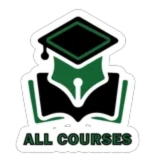
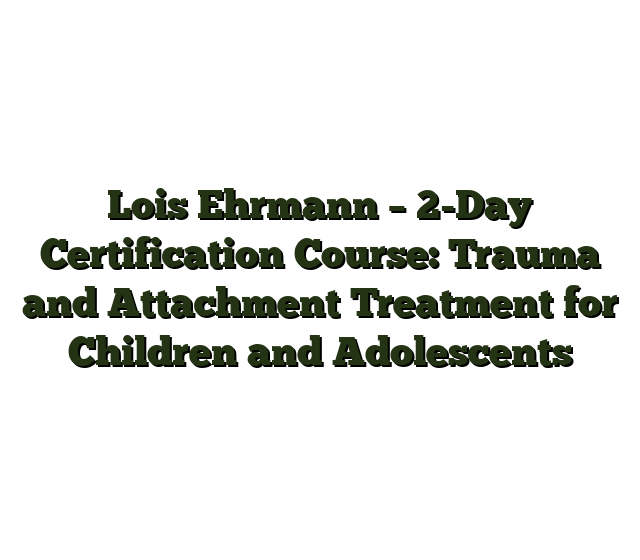
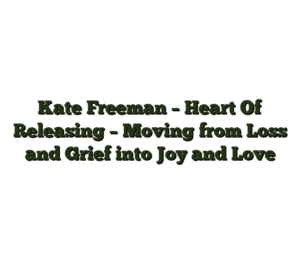
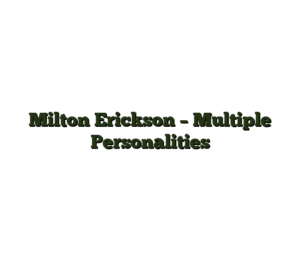

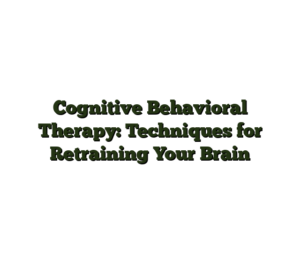

Reviews
There are no reviews yet.